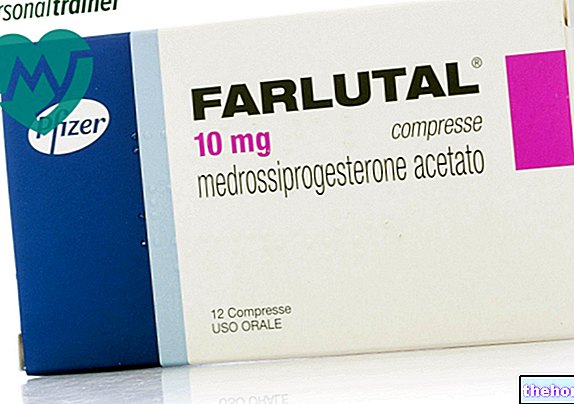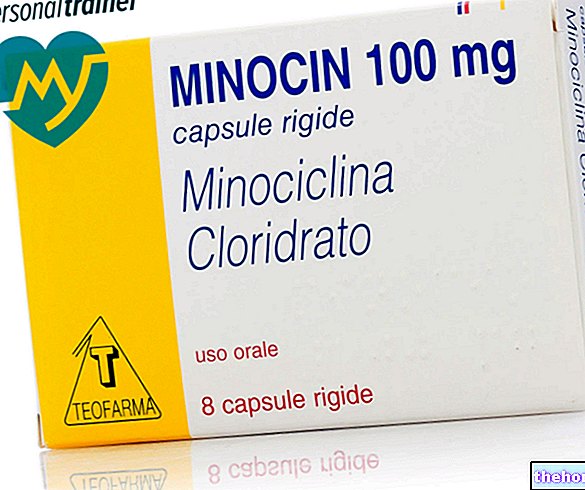Active ingredients: Paricalcitol
Zemplar 2 micrograms Soft capsules
Zemplar package inserts are available for pack sizes:- Zemplar 1 microgram Soft capsules
- Zemplar 2 micrograms Soft capsules
- Zemplar 5 micrograms / ml Solution for injection
Why is Zemplar used? What is it for?
Zemplar is a synthetic form of active vitamin D.
Vitamin D in its active form ensures the normal function of numerous tissues in our body, including the parathyroid glands and bones. In people with normal kidney function, this active form of vitamin D is naturally produced by the kidneys, but in the case of kidney failure, the production of active vitamin D is considerably reduced. Zemplar therefore provides a source of active vitamin D when the body is unable to produce enough and helps prevent the consequences of low levels of active vitamin D in patients with renal insufficiency (Stages 3, 4 and 5) i.e. high levels of parathyroid hormone which can cause bone problems.
Contraindications When Zemplar should not be used
Do not take Zemplar
- if you are allergic (hypersensitive) to paricalcitol or any of the other ingredients of Zemplar (listed in section 6).
- if you have high levels of calcium or vitamin D in your blood.
Your doctor will be able to inform you if your case falls within the two conditions mentioned above.
Precautions for use What you need to know before taking Zemplar
- Before starting treatment, it is important that you limit the amount of phosphorus in your diet.
- Phosphorus binders may be needed to control phosphorus levels. If you are taking calcium-based phosphorus binders, your doctor should adjust your dose.
- Your doctor will order some blood tests to monitor your treatment.
- Increased levels of a substance called creatinine have been observed in some patients with stage 3 and 4 chronic kidney disease. However, this increase is not reflected in a reduction in renal function.
Interactions Which drugs or foods may change the effect of Zemplar
Tell your doctor or pharmacist if you are taking, have recently taken or might take any other medicines.
Some medicines can affect the way Zemplar works or make side effects more likely. It is especially important to tell your doctor if you are taking ketoconazole (used to treat fungal infections such as candidiasis or thrush), cholestyramine (used to reduce the cholesterol levels), if you are taking heart or blood pressure medicines (for example, digoxin and diuretics or pills to get rid of excess water from our body) or medicines that have a high calcium content. It is also important to note if you are taking medicines containing magnesium or aluminum, such as some antacids and phosphorus binders.
Ask your doctor or pharmacist for advice before taking any other medicines.
Zemplar with food and drink
Zemplar can be taken with or between meals.
Warnings It is important to know that:
Pregnancy and breastfeeding
If you are pregnant or breastfeeding, think you may be pregnant or are planning to become pregnant, ask your doctor or pharmacist for advice before taking this medicine. There are limited or no data from the use of paricalcitol in pregnant women. . Therefore the potential risk is unknown, so paricalcitol should only be used if strictly necessary.
It is not known whether paricalcitol is excreted in human milk. If you are taking Zemplar, ask your doctor for advice before breastfeeding.
Ask your doctor or pharmacist for advice before taking any other medicines.
Driving and using machines
Zemplar does not appear to affect the ability to drive or use machines.
Zemplar contains ethanol
This medicine contains a small amount of ethanol (alcohol), less than 100 mg per capsule, which can modify or increase the effect of other drugs. This can cause harm to those suffering from liver disease, alcoholism, epilepsy, who have suffered brain damage or are suffering from diseases, as well as pregnant or lactating women and children.
Dose, Method and Time of Administration How to use Zemplar: Posology
Always take Zemplar exactly as your doctor has told you. If in doubt, consult your doctor or pharmacist.
Chronic renal failure Stages 3 and 4
The usual dose is one capsule a day or every other day, up to three times a week. Based on the results of the laboratory tests, your doctor will decide the appropriate dose for you. Once treatment with Zemplar is started, it is likely that a dose adjustment will be made, depending on how you respond to treatment. Your doctor will help you determine the right dose of Zemplar.
Chronic renal failure Stage 5
The usual dose is one capsule a day or every other day, up to three times a week. Based on the results of the laboratory tests, your doctor will decide the appropriate dose for you. Once treatment with Zemplar is started, it is likely that a dose adjustment will be made, depending on how you respond to treatment. Your doctor will help you determine the right dose of Zemplar.
Kidney transplant
The usual dose is one capsule a day, or every other day, up to three times a week. Based on the results of the laboratory tests, your doctor will decide the appropriate dose for you. Once treatment with Zemplar is started, it is likely that a dose adjustment will be made, depending on how you respond to treatment. Your doctor will help you determine the right dose of Zemplar.
Diseases of the liver
If you have mild or moderate liver disease, no dose adjustment will be necessary. However, there is no experience in patients with severe liver disease.
Use in children and adolescents
There is no information on the use of Zemplar capsules in children.
Use in the elderly
There is "limited experience" of the use of Zemplar in patients over the age of 65. In general, no differences in the efficacy and safety of the drug were observed between patients aged 65 years or older and younger patients.
If you forget to take Zemplar:
If you forget to take a dose of your medicine, take it immediately as soon as you remember. However, if it is already time for the next dose, do not take the missed dose; more simply, continue taking Zemplar according to your doctor's instructions (dose and time).
Do not take a double dose to make up for a forgotten dose.
If you stop taking Zemplar:
It is important to continue taking Zemplar as directed by your doctor unless you have been explicitly instructed to stop taking it.
If you have any further questions on the use of this medicine, ask your doctor or pharmacist.
Overdose What to do if you have taken too much Zemplar
An overdose of Zemplar can cause an abnormal increase in blood calcium levels which can be harmful. Symptoms that may appear soon after taking an overdose of Zemplar include a feeling of weakness and / or numbness, headache, nausea (feeling sick) or vomiting, dry mouth, constipation, muscle or bone pain and taste metallic.
Symptoms that may occur over a longer period of taking too much Zemplar include: loss of appetite, sleepiness, weight loss, eye discomfort, runny nose, itching, feeling hot and feverish, loss of libido, severe abdominal pain (due to inflammation of the pancreas) and kidney stones. Blood pressure may change and irregular heartbeat (palpitations) may appear. Blood and urine test results may show increased cholesterol , urea and nitrogen and an increase in liver enzyme levels. Zemplar may rarely cause mental changes including confusion, sleepiness, insomnia or irritability.
If you take too much Zemplar, or notice any of the above symptoms, consult a doctor immediately.
Side Effects What are the side effects of Zemplar
Like all medicines, Zemplar can cause side effects, although not everybody gets them.
Tell your doctor immediately if you notice any of the following side effects:
In patients with chronic renal failure stages 3 and 4
The most common effects (at least 1 in 100 patients) include rash and stomach pain.
There may be an increase in blood levels of a substance called calcium, as well as a substance called calcium phosphorus which is derived from the amount of calcium to the amount of another substance in the blood called phosphate (in patients with significant chronic kidney disease).
Uncommon effects (at least 1 in 1000 patients) are allergic reactions (such as difficulty breathing, dyspnoea, rash, itching or edema of the face and lips), skin itching and hives, constipation, dry mouth, muscle cramps, dizziness and taste alteration. Liver function tests may also be altered.
If you experience an allergic reaction, contact your doctor immediately.
In patients with chronic renal failure Stage 5
The most common side effects (at least 1 in 100 patients) are diarrhea, heartburn (reflux or indigestion), decreased appetite, dizziness, breast pain and acne. Changes in blood calcium levels can also occur.
The most common side effects (at least 1 in 100 patients) observed in patients during intravenous paricalcitol use are: headache, taste disturbance, itching, decrease in parathyroid hormone levels, increase in calcium levels and increase in phosphorus levels.
Less common side effects (at least 1 in 1000 patients) seen in patients taking intravenous paricalcitol are: irregular heartbeat, prolonged bleeding time, liver function test abnormal, weight loss, heartbeat arrest, tachyarrhythmia , decreased white blood cell count, decreased red blood cell count, enlarged glands, stroke, transient ischemic attack, coma, fainting, dizziness, twitching, tingling, numbness, increased eye pressure, slightly red eyes, red eyes, earache, pulmonary edema, nosebleed, dyspnoea, wheezing, cough, mild intestinal bleeding, anal bleeding, stomach pain, difficulty swallowing, irritable bowel syndrome, diarrhea, constipation, heartburn, vomiting, nausea, dry mouth, stomach discomfort, itchy rash, rash, blistering, hair loss, hair growth li, night sweats, injection site pain, skin burning sensation, joint pain, muscle aches, joint stiffness, back pain, muscle twitching, elevated parathyroid hormone levels in the blood, loss of appetite, decreased blood pressure appetite, blood infections, pneumonia, flu, colds, sore throat, vaginal infections, breast cancer, low blood pressure (hypotension), high blood pressure (hypertension), chest pain, abnormal gait, swollen legs, swelling, chest discomfort, fever, weakness, pain, tiredness, malaise, thirst, feeling of discomfort, breast pain, allergy, difficulty in erection, disturbances in consciousness, confusion, anxiety, insomnia, irritability, agitation.
Reporting of side effects
If you get any side effects, talk to your doctor or pharmacist. This includes any possible side effects not listed in this leaflet. You can also report side effects directly via the national reporting system at www.agenziafarmaco.it/it/responsabili. By reporting side effects you can help provide more information on the safety of this medicine.
Expiry and Retention
Keep this medicine out of the sight and reach of children.
This medicinal product does not require any special storage conditions.
Do not use Zemplar after the expiry date which is stated on the carton and label after EXP. The expiry date refers to the last day of that month.
Do not throw any medicines via wastewater or household waste. Ask your pharmacist how to throw away medicines you no longer use. This will help protect the environment.
Other information
What Zemplar contains
- The active ingredient is paricalcitol. Each soft capsule contains 2 micrograms of paricalcitol.
- The other ingredients are: medium chain triglycerides, ethanol, butylhydroxytoluene.
- The capsule shell contains: gelatin, glycerol, water, titanium dioxide (E171), black iron oxide (E172) and yellow iron oxide (E172).
- The printing ink contains: propylene glycol, black iron oxide (E172), polyvinyl acetate phthalate, Macrogol 400, ammonium hydroxide.
What Zemplar looks like and contents of the pack
Zemplar Soft Capsules, 2 micrograms, is an orange, oval soft capsule marked with the logo and the initials ZF.
Each pack contains 1 or 4 blisters. Each blister contains 7 capsules.
Source Package Leaflet: AIFA (Italian Medicines Agency). Content published in January 2016. The information present may not be up-to-date.
To have access to the most up-to-date version, it is advisable to access the AIFA (Italian Medicines Agency) website. Disclaimer and useful information.
01.0 NAME OF THE MEDICINAL PRODUCT
ZEMPLAR SOFT CAPSULES
02.0 QUALITATIVE AND QUANTITATIVE COMPOSITION
Each capsule of Zemplar 1 microgram contains 1 microgram of paricalcitol.
Each capsule of Zemplar 2 mcg contains 2 mcg of paricalcitol.
Excipient with known effects:
Each capsule of Zemplar 1 microgram contains 0.71 mg of ethanol.
Each capsule of Zemplar 2 mcg contains 1.42 mg of ethanol.
For the full list of excipients, see section 6.1.
03.0 PHARMACEUTICAL FORM
Soft capsules
1 microgram capsule: gray, oval soft capsule marked ZA
2 mcg capsule: orange-brown, oval soft capsule marked with the initials ZF
04.0 CLINICAL INFORMATION
04.1 Therapeutic indications
Zemplar is indicated for the prevention and treatment of secondary hyperparathyroidism in adult patients with chronic renal failure (Stages 3 and 4) and end stage chronic renal failure (Stage 5) undergoing hemodialysis or peritoneal dialysis.
04.2 Posology and method of administration
Dosage
Chronic Kidney Failure (CKD) Stages 3 and 4
Zemplar should be given once a day, or three times a week, every other day.
Initial Dosage
The starting dose should be calculated taking into account the basal levels of intact parathyroid hormone (iPTH).
Dose Adjustment
The dose should be individualized, i.e. determined individually based on serum or plasma iPTH levels, by monitoring serum calcium and serum phosphatemia. Table 2 offers an example of a recommended approach for dose adjustment.
After initiation of therapy and during dose adjustment periods, serum calcium levels should be carefully monitored. If "hypercalcaemia or a persistently elevated calcium phosphate product of more than 55 mg2 / dl2 (4.4 mmol2 / l2) is observed, when the patient is undergoing therapy with calcium-based phosphorus binders, the dose or discontinue administration. Alternatively, the administration of Zemplar should be reduced or temporarily interrupted. If therapy is discontinued, the drug should be restarted at a lower dose when the calcium and calcium phosphate product they will be normalized.
Chronic Kidney Failure (CKD) Stage 5
Zemplar is given three times a week, every other day.
Initial Dosage
The starting dose of Zemplar in mcg should be calculated from baseline intact parathyroid hormone levels = iPTH (pg / ml) / 60 [(pmol / l) / 7] up to a maximum starting dose of 32 mcg.
Dose adjustment
The dose should be individualized, i.e. individually determined and should be based on serum levels of intact parathyroid hormone, calcium and phosphorus. A recommended dose adjustment of paricalcitol capsules is based on the following formula:
Dose adjustment
or
Dose adjustment
After initiation of therapy, during the dose adjustment period and in conjunction with the administration of potent P450 3A inhibitors, careful monitoring of calcium and phosphorus levels should be undertaken. If hypercalcaemia or an elevated calcium xphosphorus product is noted and if the patient is undergoing therapy with calcium-based phosphorus binders, their dose should be reduced or their administration discontinued. Alternatively, the patient can switch to a non-calcium-based phosphorus binder.
If the calcium is> 11.0 mg / dl (2.8 mmol / l) or the Ca x P product> 70 mg2 / dl2 (5.6 mmol2 / l2), or iPTH ≤150 pg / ml, the dose should be decreased by 2 - 4 mcg from that calculated based on the most recent level of iPTH / 60 (pg / ml) [iPTH / 7 (pmol / l)]. In case a further dose adjustment is required, administration of paricalcitol capsules should be reduced or stopped until these parameters have normalized.
As the iPTH level approaches the reference range (150-300 pg / mL), small individualized dose adjustments may be required to achieve a stable iPTH level. monitoring of iPTH, calcium or phosphorus levels can be done less frequently than once a week, a more modest starting dose / dose adjustment ratio can be used.
Special populations
Hepatic impairment:
In patients with mild to moderate hepatic impairment, no dose adjustment is required.
There is no experience in patients with severe hepatic impairment (see section 5.2).
Kidney transplant:
Renal transplant patients with Stage 3 and 4 Chronic Renal Failure and secondary hyperparathyroidism were not studied during the Phase 3 clinical trials. Based on the published studies, the starting dose and dose adjustment algorithm for patients who have undergone kidney transplantation with Stage 3 and 4 Chronic Renal Failure and secondary hyperparathyroidism are the same as those in patients with simple Stage 3 and 4 Chronic Renal Failure and secondary hyperparathyroidism. Serum calcium and phosphorus levels should be monitored closely after the " initiation, during the dose adjustment period and during co-administration of strong cytochrome P450 3A inhibitors.
Pediatric population:
The safety and efficacy of Zemplar Capsule in children up to 18 years of age have not yet been established.
Currently available data are described in section 5.1 but no recommendation on a posology can be made.
Senior citizens:
No overall differences in safety and efficacy of the drug were observed between elderly patients (65 - 75 years) and younger patients, but the possibility that some older individuals are more sensitive cannot be ruled out.
Method of administration
Zemplar can be taken with or without food.
04.3 Contraindications
Paricalcitol should not be prescribed to patients with proven vitamin D toxicity, hypercalcaemia, or hypersensitivity to paricalcitol or to any of the excipients listed in section 6.1.
04.4 Special warnings and appropriate precautions for use
Excessive suppression of parathyroid hormone secretion can lead to elevated serum calcium levels and can lead to low turnover bone disease. In order to obtain adequate physiological reference values, careful patient monitoring and individual dose titration should be performed.
If clinically significant "hypercalcaemia" develops and the patient is on therapy with a calcium-based phosphorus binder, the dose of that chelator should be reduced or the administration discontinued.
Chronic hypercalcemia may be associated with generalized vascular calcification and other soft tissue calcifications.
Medicinal products containing phosphate or vitamin D should not be taken concomitantly with paricalcitol due to an increased risk of hypercalcaemia and an increase in the Ca x P product (see section 4.5).
Digitalis-induced toxicity is potentiated by the presence of any cause of hypercalcaemia, so extreme caution should be exercised when digitalis is prescribed concomitantly with paricalcitol (see section 4.5).
In patients on pre-dialysis, paricalcitol, like other vitamin D receptor activators, can cause an increase in serum creatinine (and consequently decrease the mean glomerular filtration rate GFR [eGFR]) without altering the true glomerular filtration rate (GFR ).
Extreme caution should be used if paricalcitol is administered concomitantly with ketoconazole (see section 4.5).
Special Warning on Excipients:
This medicinal product contains a small amount of ethanol (alcohol), less than 100 mg for each 1 mcg and 2 mcg capsule. This quantity can be harmful in subjects suffering from alcoholism (refer to sections 2 and 4.2). To be considered in pregnant or lactating women, children and high-risk groups such as patients with liver disease or epilepsy.
04.5 Interactions with other medicinal products and other forms of interaction
Ketoconazole: Ketoconazole is known to be a non-specific inhibitor of various cytochrome P450 enzymes. The data available in vivo and in vitro suggest that ketoconazole may interact with enzymes responsible for the metabolism of paricalcitol and other vitamin D analogues. Extreme caution should be used when administering paricalcitol concomitantly with ketoconazole. The effect of multiple doses of ketoconazole given at doses of 200 mg, twice daily (BID) for 5 days, on the pharmacokinetics of paricalcitol capsules was studied in healthy subjects. In the presence of ketoconazole the Cmax of paricalcitol was affected only to a negligible extent, but the AUC0- ¥ nearly doubled. The mean half-life of paricalcitol was 17.0 hours in the presence of ketoconazole, compared to the 9.8 hour half-life when paricalcitol was administered alone (see section 4.4). The results of this study indicate that following oral or intravenous paricalcitol administration, the maximal AUCINF enlargement of paricalcitol due to drug interaction with ketoconazole is unlikely to be greater than double.
No specific interaction studies have been performed. The toxicity induced by digitalis is enhanced by hypercalcemia attributable to any cause, therefore the utmost caution should be used in the case of patients undergoing therapy with paricalcitol who must also take digitalis concomitantly.
Phosphate or vitamin D-related medicinal products should not be taken concomitantly with paricalcitol as there may be an increased risk of hypercalcaemia and an increase in Ca x P product may occur (see section 4.4).
High doses of calcium preparations or thiazide diuretics may increase the risk of hypercalcaemia.
Magnesium preparations (e.g. antacids) should not be taken concomitantly with vitamin D preparations as hypermagnesaemia may occur.
Aluminum preparations (e.g. antacids, phosphorus chelators) should not be administered concomitantly with vitamin D preparations in chronic therapy, as an increase in blood levels of aluminum may occur and bone toxicity may occur from aluminum.
Medicines that reduce the intestinal absorption of fat-soluble vitamins, such as cholestyramine, may interfere with the absorption of Zemplar capsules.
04.6 Pregnancy and lactation
Pregnancy
There are no adequate data on the use of paricalcitol in pregnant women. Studies in animals have revealed reproductive toxicity (see section 5.3). The potential risk in humans is unknown. Consequently, paricalcitol should not be used during pregnancy unless absolutely necessary.
Feeding time
It is not known whether paricalcitol is excreted in human milk. Animal studies have shown that paricalcitol or its metabolites are excreted in breast milk in small quantities. The decision to continue or discontinue breastfeeding or to continue or discontinue Zemplar therapy should be considered in consideration of the benefit of breastfeeding to the infant and the benefit of Zemplar therapy. to the mother.
04.7 Effects on ability to drive and use machines
Zemplar has negligible influence on the ability to drive or use machines.
04.8 Undesirable effects
Summary of the safety profile
The safety of paricalcitol capsules was evaluated in three multicentre, double-blind, placebo-controlled, 24-week clinical trials involving 220 patients with Chronic Renal Failure, Stages 3 and 4 and in a multicenter clinical study. 12-week double-blind, placebo-controlled trial involving 88 patients with Chronic Renal Failure, Stage 5. In addition, post-marketing experience data with paricalcitol capsules are available from two additional studies. The most frequently reported adverse reactions in patients receiving paricalcitol are hypercalcaemia and an increase in calcium phosphate product. In clinical trials of stages 3/4 and stage 5, the incidence of hypercalcaemia was Zemplar (3/167, 2%) versus placebo (0/137, 0%) and the elevated calcium phosphate product was Zemplar ( 19/167, 11%) versus placebo (8/137, 6%).
Tabulated list of adverse reactions
All adverse reactions related to Zemplar soft capsules are listed in Table 3 by MedDRA system organ convention and by frequency. Frequencies are defined as follows: very common (≥1 / 10), common (≥1 / 100,
Table 3: Adverse Reactions observed with Zemplar Soft Capsules in clinical trials and from post-marketing experience.
* The frequency of adverse reactions resulting from post-marketing experience cannot be estimated and has been reported as "Not known".
† This adverse reaction was observed in studies in pre-dialysis patients (see also section 4.4).
Reporting of suspected adverse reactions
Reporting of suspected adverse reactions occurring after authorization of the medicinal product is important as it allows continuous monitoring of the benefit / risk balance of the medicinal product. Healthcare professionals are asked to report any suspected adverse reactions via the national reporting system. "address www.agenziafarmaco.gov.it/it/responsabili.
04.9 Overdose
Excessive administration of Zemplar capsules can cause hypercalcemia, hypercalciuria, hyperphosphataemia and "excessive suppression of parathyroid hormone." High calcium and phosphate intake concomitantly with Zemplar capsules can induce similar changes.
Treatment of patients with "clinically significant hypercalcaemia consists of immediate dose reduction or discontinuation of paricalcitol therapy and includes the introduction of a low-calcium diet, suspension of" calcium-containing supplements, patient mobilization, monitoring of electrolyte and fluid imbalances, evaluation of changes in the electrocardiographic trace (critical in patients undergoing digitalis therapy) and "hemodialysis or peritoneal dialysis with calcium-free dialysate, on the basis of what is deemed appropriate.
The signs and symptoms of vitamin D intoxication associated with hypercalcemia include:
Early signs and symptoms: asthenia, headache, drowsiness, nausea, vomiting, dry mouth, constipation, myalgia, bone pain, metallic taste.
Late signs and symptoms: anorexia, weight loss, conjunctivitis (calcified), pancreatitis, photophobia, rhinorrhea, pruritus, hyperthermia, decreased libido, increased blood urea nitrogen, hypercholesterolemia, increased transaminases, ectopic calcification, hypertension, cardiac arrhythmias, drowsiness, death and rarely overt psychosis.
Serum calcium levels should be monitored frequently until normalized.
Paricalcitol is not significantly eliminated by dialysis.
05.0 PHARMACOLOGICAL PROPERTIES
05.1 Pharmacodynamic properties
Pharmaco-therapeutic category: antiparathyroid agents.
ATC code: H05BX02.
Action Mechanism
Paricalcitol is a synthetic analogue of calcitriol, the biologically active form of vitamin D, with modifications on the side chain (D2) and on the A (19-nor) ring. Unlike calcitriol, paricalcitol is a selective activator of the vitamin D (VDR). Paricalcitol selectively stimulates vitamin D receptors in the parathyroid glands without causing an increase in vitamin D receptors in the intestine and is less active on bone resorption. Furthermore, paricalcitol stimulates the calcium-sensitive receptors (CaSR) present in the parathyroid glands. Consequently, paricalcitol reduces parathyroid hormone (PTH) levels by inhibiting parathyroid proliferation and decreasing PHT synthesis and secretion, with minimal impact on calcium and phosphorus levels; paricalcitol can act directly on osteoblasts to preserve bone volume and improve mineralization surfaces. Correction of altered levels of parathyroid hormone, together with normalization of calcium and phosphorus homeostasis, can prevent or cure metabolic bone disease associated with chronic renal failure.
Clinical Effectiveness
Chronic Kidney Failure Stage 3 and 4
The primary drug efficacy endpoint of at least two consecutive reductions of ≥30% from baseline iPTH was achieved by 91% of patients treated with paricalcitol capsules and 13% of patients treated with placebo (bone alkaline pphosphatase - serum specific and serum osteocalcin were significantly reduced (renal dysfunction, estimated glomerular filtration rate (through the MDRD formula) and serum creatinine in patients treated with paricalcitol capsules compared to patients treated with placebo. In a significantly greater number of patients treated with paricalcitol capsules there was a reduction in proteinuria, as detected by the measurements performed with the semi-quantitative method (dipstick), compared to patients treated with placebo.
Chronic Kidney Failure Stage 5
The primary drug efficacy endpoint of at least two consecutive reductions of ≥30% from baseline iPTH was achieved by 88% of patients treated with paricalcitol capsules and 13% of patients treated with placebo (p
Clinical data collected in pediatric patients following administration of Zemplar solution for injection (intravenous):
The safety and efficacy of Zemplar solution for injection were investigated in a randomized, double-blind, placebo-controlled study of 29 pediatric patients, aged 5 to 19 years with end stage chronic renal failure undergoing hemodialysis. The six youngest patients treated with Zemplar solution for injection in the study were aged between 5 and 12 years. The starting dose of Zemplar solution for injection was 0.04 mcg / kg 3 times per week if the baseline intact parathyroid hormone (iPTH) was
05.2 Pharmacokinetic properties
Absorption
Paricalcitol is well absorbed. In healthy subjects, following oral administration of paricalcitol equal to 0.24 mcg / kg, the mean absolute bioavailability was approximately 72%; the maximum plasma concentration (Cmax) was equal to 0.630 ng / ml (1.512 pmol / ml) at 3 hours and the area under the concentration time curve (AUC0- ¥) was equal to 5.25 ng • h / ml (12.60 pmol • h / ml). The mean absolute bioavailability in patients undergoing hemodialysis and peritoneal dialysis was 79% and 86%, respectively, with an upper limit of the 95% confidence interval equal to 93% and 112%, respectively. A food interaction study performed on healthy subjects indicated that Cmax and "AUC0-? remain unchanged when paricalcitol is administered simultaneously with a high-lipid meal compared to administration in the fasted state. Therefore, Zemplar Capsule can also be taken between meals.
Paricalcitol Cmax and AUC0-? Increased proportionally over the dose range of 0.06 to 0.48 mcg / kg in healthy subjects. Following multiple doses, steady-state exposure was achieved within seven days in healthy subjects who took the drug daily or three times a week.
Distribution
Paricalcitol is extensively bound to plasma proteins (> 99%). The ratio of blood paricalcitol to plasma paricalcitol concentration averaged 0.54 over the concentration range of 0.01 to 10 ng / mL (0.024 to 24 pmol / mL), indicating that cells A very small amount of drug was associated with the blood.The mean apparent volume of distribution following administration of a dose of 0.24 mcg / kg of paricalcitol in healthy subjects was 34 liters.
Biotransformation
After oral administration of a dose of 0.48 μg / kg of 3H-paricalcitol, the parent drug was extensively metabolised and only about 2% of the eliminated dose was recovered intact in the faeces while none was detected in the urine. trace of the parent drug. About 70% of the radioactivity was eliminated in the faeces and 18% was recovered in the urine. Most of the systemic exposure is due to parent drug. Two minor metabolites of paricalcitol have been identified in human plasma. One metabolite was identified as 24 (R) -hydroxy paricalcitol, while the other metabolite was not identified. 24 (R) -hydroxy paricalcitol is less active than paricalcitol in a rat model in vivo suppression of parathyroid hormone.
The data in vitro suggest that paricalcitol is metabolised by various hepatic and non-hepatic enzymes, including mitochondrial CYP24, CYP3A4 and "UGT1A4. Identified metabolites include the product of 24 (R) -hydroxylation, as well as 24.26- and 24.28 -dehydroxylation and direct glucuronidation.
Elimination
In healthy subjects, the mean elimination half-life of paricalcitol is five to seven hours over the studied dose range of 0.06 to 0.48 mcg / kg. The degree of accumulation was consistent with the half-life and dose frequency. Hemodialysis sessions have essentially no effect on paricalcitol elimination.
Special populations
Senior citizens
The pharmacokinetics of paricalcitol have not been studied in patients over 65 years of age.
Pediatrics
The pharmacokinetics of paricalcitol have not been examined in patients below 18 years of age.
Type
The pharmacokinetics of paricalcitol following administration of single doses of the drug in the dose range of 0.06 to 0.48 mcg / kg were independent of gender.
Hepatic insufficiency
In a study performed with intravenous Zemplar administration, the availability of paricalcitol (0.24 mcg / kg) was compared in patients with mild (n = 5) and moderate (n = 5) hepatic impairment (in accordance with Child-Pugh method) and in subjects with normal liver function (n = 10). The pharmacokinetics of unbound paricalcitol were similar across the range of liver function evaluated in this study. In patients with mild or moderate hepatic impairment, no dose adjustment is required. Influence on the pharmacokinetics of paricalcitol in the presence of insufficiency severe hepatic was not evaluated.
Kidney failure
The pharmacokinetics of paricalcitol following single dose administration was evaluated in patients with chronic renal failure stage 3 or moderate renal impairment (n = 15, GFR = 36.9 - 59.1 ml / min / 1.73 m2), Chronic Renal Failure stage 4 or severe renal impairment (n = 14, GFR = 13.1 - 29.4 ml / min / 1.73 m2) and Chronic Renal Failure stage 5 or end stage renal disease [n = 14 in hemodialysis (HD) and n = 8 in peritoneal dialysis (PD)]. Similar to endogenous 1,25 (OH) 2 D3, the pharmacokinetics of paricalcitol following oral administration were significantly influenced by the presence of renal insufficiency, as demonstrated in Table 4. Compared to healthy subjects, patients affected Chronic Renal Failure Stage 3, 4, and 5 showed a decrease in CL / F and an increase in the half-life.
Table 4. Comparison of Mean ± SD Pharmacokinetic Parameters in Patients with Renal Failure in Different Stages respect to Healthy Subjects
Following oral administration of the paricalcitol capsules, the pharmacokinetic profile of paricalcitol in Chronic Renal Failure in stages 3-5 was comparable. Therefore, no special dose adjustments are required, other than those specifically recommended (see section 4.2).
05.3 Preclinical safety data
The most salient findings from repeat-dose toxicity studies performed in rodents and dogs are generally attributed to the calcemic activity of paricalcitol. Effects that were not clearly related to hypercalcaemia included a decrease in white blood cell count. in dogs, the occurrence of thymic atrophy in dogs and the presence of altered values of activated partial thromboplastin time (increased in dogs, decreased in rats). White blood cells.
It was observed that paricalcitol does not adversely affect the fertility of rats and that there is no evidence of teratogenic activity in either rats or rabbits. High doses of other vitamin D preparations taken during pregnancy in animals induced teratogenesis. Paricalcitol has been shown to adversely affect fetal viability and to promote a significant increase in peri- and postnatal mortality of newborn rats when administered at doses that were found to be maternally toxic.
During a series of genetic toxicity tests in vitro and in vivo, it has been shown that paricalcitol does not possess any potential genetic toxicity.
Studies on carcinogenicity in rodents did not indicate particular risks for human use.
Doses administered and / or systemic exposures to paricalcitol were slightly higher than therapeutic doses / systemic exposures (see section 4.2).
06.0 PHARMACEUTICAL INFORMATION
06.1 Excipients
Contents of the Capsules:
Medium-chain triglycerides
Ethanol
Butylhydroxytoluene
Capsule shell:
Black ink:
Propylene glycol
Black iron oxide (E172)
Polyvinyl acetate phthalate
Macrogol 400
Ammonium hydroxide
06.2 Incompatibility
Not relevant.
06.3 Period of validity
2 years.
06.4 Special precautions for storage
This medicinal product does not require any special storage conditions.
06.5 Nature of the immediate packaging and contents of the package
High density polyethylene (HDPE) bottles with polypropylene child resistant cap closure. Each bottle contains 30 capsules.
PVC / fluoropolymer / aluminum foil blisters containing 7 capsules. Each pack contains 1 or 4 blisters packed in cartons containing 7 or 28 capsules.
Not all pack sizes may be marketed.
06.6 Instructions for use and handling
No special instructions.
07.0 MARKETING AUTHORIZATION HOLDER
AbbVie S.r.l.
S.R. 148 Pontina km 52 snc
04011 Campoverde di Aprilia (LT)
08.0 MARKETING AUTHORIZATION NUMBER
Zemplar "1 Mcg Soft Capsules" 30 Capsules In Hdpe Bottle - AIC n. 036374039
Zemplar "1 Mcg Soft Capsules" 7 Capsules In Blister Pvc / Fluoropolymer / Al - AIC n. 036374041
Zemplar "1 Mcg Soft Capsules" 28 Capsules In Blister Pvc / Fluoropolymer / Al - AIC n. 036374054
Zemplar "2 Mcg Soft Capsules" 30 Capsules In Hdpe Bottle - AIC n. 036374066
Zemplar "2 Mcg Soft Capsules" 7 Capsules In Blister Pvc / Fluoropolymer / Al - AIC n. 036374078
Zemplar "2 Mcg Soft Capsules" 28 Capsules In Blister Pvc / Fluoropolymer / Al - AIC n. 036374080
09.0 DATE OF FIRST AUTHORIZATION OR RENEWAL OF THE AUTHORIZATION
Date of first authorization: 18 June 2009
10.0 DATE OF REVISION OF THE TEXT
09/2016




























